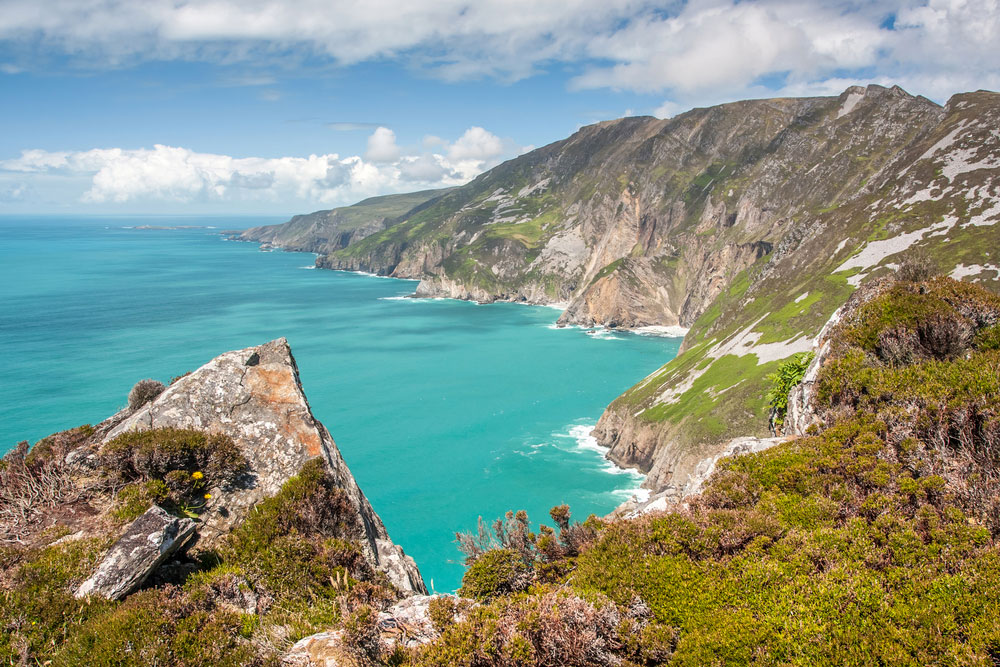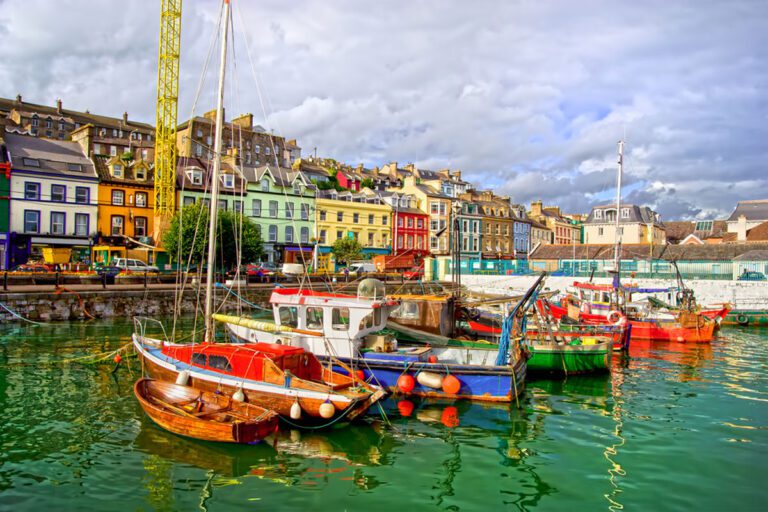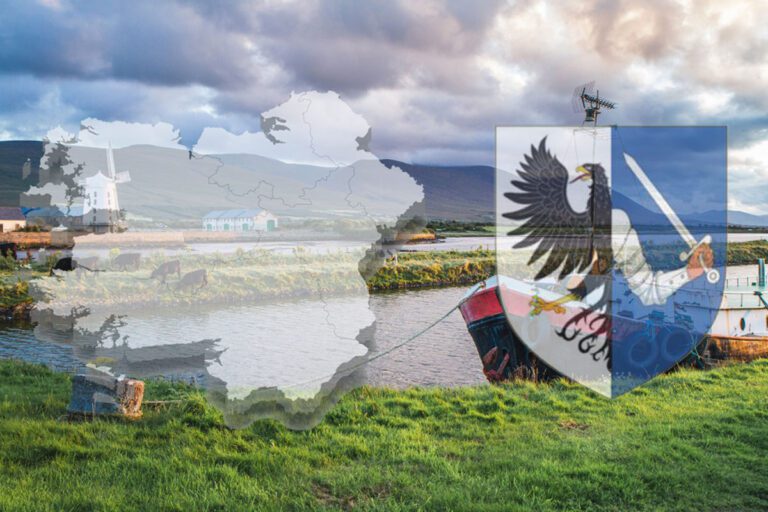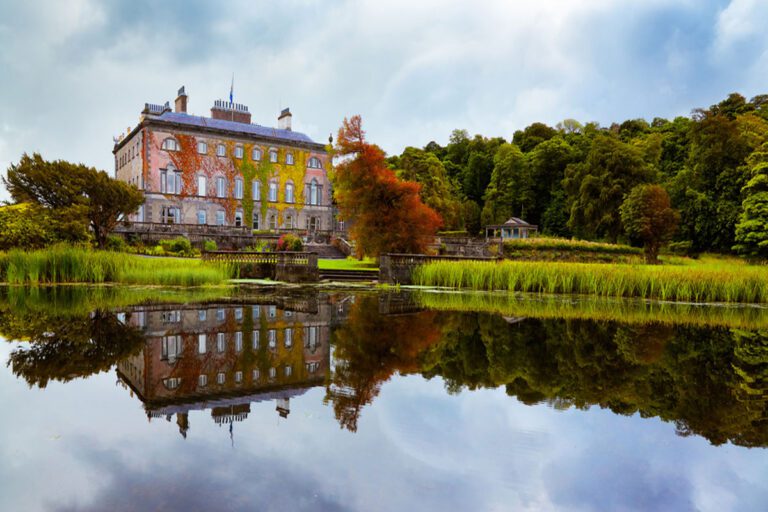When it comes to spectacular landscapes, the emerald hills of Ireland frequently steal the show as they spread beneath the sky. Attracted by their towering grandeur and the wild, unyielding beauty of the Atlantic Ocean crashing below, tourists from all over the world travel to Ireland’s famous Cliffs of Moher, which are located on the country’s western coast. Nevertheless, a short distance to the north, cloaked in fog and surrounded by a plethora of Irish folklore, is where you’ll find a hidden gem—a treasure that the people have guarded as a family heirloom for many years. The Cliffs of Slieve League, sometimes referred to as “Sliabh Liag” in Irish, are considered to be Ireland’s best-kept secret. They stand ready to reveal their majestic splendor to those who are willing to venture off the beaten route and discover them.
Slieve League is a rough and lonely seaside resort that eludes the tour buses and busy throngs of its southern counterpart since it is nestled in County Donegal, in the northwestern borders of Ireland. It’s the kind of spot where time seems to stop still, and the unadulterated splendor of nature takes center stage. This is the place to start your tour if you’re looking for some peace and quiet as well as a genuine taste of Irish culture.
What sets Slieve League apart is its towering height. While the Cliffs of Moher reach an impressive 702 feet at their highest point, Slieve League soars dramatically to over 1,972 feet, making them some of the highest sea cliffs in all of Europe. These majestic cliffs, often obscured by mist and fog, offer an otherworldly experience that feels as if you’ve stepped into the pages of ancient Irish legends.
Part of what makes Slieve League so captivating is its rich mythology. The name “Slieve League” itself has Gaelic origins, with “Sliabh” meaning mountain and “Liag” meaning flagstone. Legend has it that these cliffs were named after a mythical warrior, who, in a fit of passion, threw a giant flagstone into the sea, creating this awe-inspiring landscape.
In contrast to the Cliffs of Moher, which provide visitors with a magnificent observation platform that is also very easy to climb, Slieve League requires a little bit more work. The payoff, on the other hand, is incomparable. Those with a sense of adventure can set out on a journey that will take them along the One Man’s Path, which is a twisting and narrow path that runs along the edge of the cliffs. As you navigate this path, with the Atlantic breeze whispering secrets in your ear, you’ll feel a profound connection to the raw, untamed forces of nature.
Your walk along the cliffs will be set against the backdrop of the Atlantic Ocean, which is known for its mood swings and color shifts that occur constantly. The sound of the waves breaking on the rocks below is a siren’s cry that is both exhilarating and sobering to hear in this location. It is as if you have become a character in one of Ireland’s ancient folktales, where the sea is a living, breathing organism and the cliffs stand as sentinels guarding the realm. It is an experience that transports you back in time.
As you tread carefully along the rugged path, you might spot seabirds like puffins and razorbills, gracefully soaring on the updrafts. They call these cliffs home, effortlessly navigating the winds that buffet the coastline.
Not only is Slieve League a geological wonder, but it is also a place of spiritual significance to the people of Ireland. Early Christian hermit monks sought solitude in this remote part of Ireland, which is why the cliffs are littered with monastic ruins dating back to the sixth century. Their beehive houses and oratories made of stone continue to remain as mute testimony to centuries of meditation and devotion.
You become a part of an ageless tapestry as you stand on the edge of these towering cliffs and look out over the immense expanse of the Atlantic Ocean. You can’t help but feel the weight of history and the pull of Ireland’s old spirit when you’re here, where the sea meets the sky and the country stretches to the edge of imagination. The Cliffs of Slieve League are more than just a place to visit; rather, they are an invitation to step into a realm where the grandeur of nature reigns supreme and the tales of the past are carried on the wind even now.
One of the most remarkable aspects of Slieve League is the genuine hospitality of the local people. While the cliffs themselves are ancient and seemingly eternal, the communities around them have embraced modernity while preserving their deep-rooted traditions. Visitors often find themselves welcomed with open arms into charming villages like Carrick and Teelin, where cozy pubs offer a taste of traditional Irish music and storytelling.
Ireland is renowned for its culinary delights, and the local cuisine in Donegal is no exception. After a day of exploring the cliffs, treat your taste buds to the flavors of the region. Savor freshly caught seafood, hearty stews, and traditional Irish dishes prepared with a modern twist. Don’t forget to pair your meal with a pint of Guinness or a fine Irish whiskey, for this is a land where each sip tells a story.
A Few Useful Suggestions for Your Stay
Now that we’ve covered the logistics of getting to Slieve League, let’s talk about how to make the most of your time there.
1. Timing is Key: Slieve League is a destination that can be enjoyed year-round. However, the best weather for breathtaking views typically occurs between May and September. Plan your visit during this window to maximize your experience.
2. Proper Footwear: While the trails along the cliffs are well-maintained, sturdy footwear with good grip is essential, especially if you intend to explore One Man’s Path. The terrain can be uneven, and it’s crucial to stay safe.
3. Visitor Center: Start your journey at the Slieve League Cliffs Centre. Here, you’ll find information about the trails, weather conditions, and local history. The center also offers guided tours for those who want a more immersive experience.
4. Photography: Bring your camera or smartphone, for this is a landscape that begs to be captured. Whether you’re a professional photographer or a casual snapper, the cliffs’ dramatic scenery will provide ample opportunities for stunning shots.
5. Local Guidance: Consider hiring a local guide to enhance your experience. They can share their intimate knowledge of the area, including its history, folklore, and hidden gems. It’s a way to see Slieve League through the eyes of those who know it best.
6. Plan for Changes: The weather in this part of Ireland can be unpredictable. Fog and mist are common, so be prepared for changes in visibility. While the cliffs are magnificent in any weather, patience may be required for those picture-perfect moments.
7. Respect Nature: Slieve League is a protected natural area. Please respect the environment by sticking to designated paths, not disturbing wildlife, and disposing of litter responsibly.
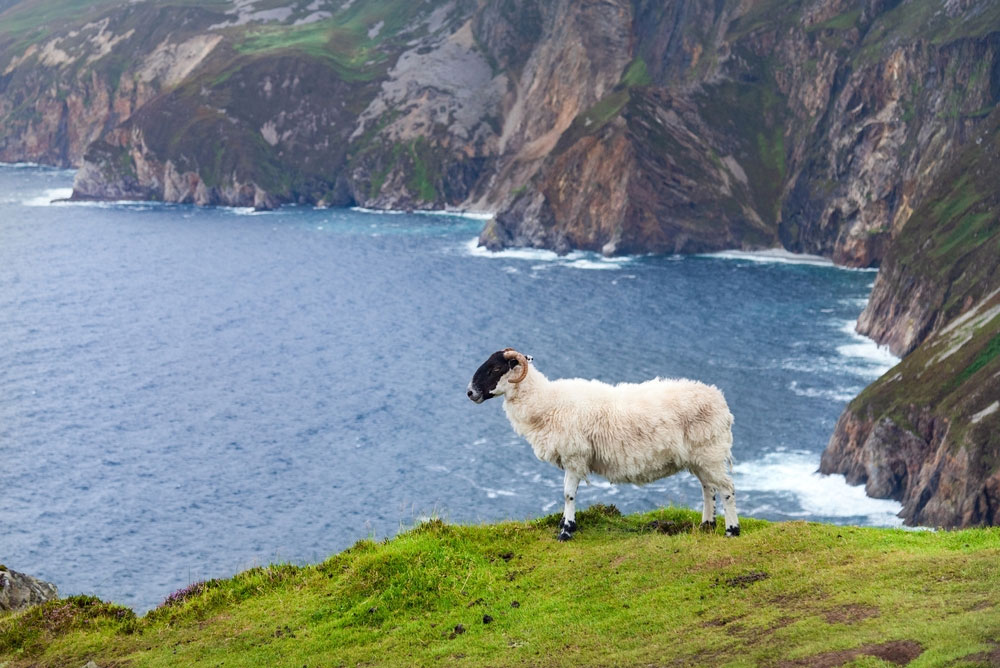
Here are some more famous tourist attractions in County Donegal:
Glenveagh National Park: This national park is a haven for nature enthusiasts. It features pristine lakes, lush forests, and the stunning Glenveagh Castle, which is surrounded by beautiful gardens.
Malin Head: Located at the northernmost tip of Ireland, Malin Head offers rugged coastal scenery and is a prime spot for birdwatching and whale watching.
Donegal Castle: Situated in the heart of Donegal town, this 15th-century castle is a well-preserved example of medieval architecture and offers guided tours.
Slieve Snaght: A popular peak for hikers, Slieve Snaght is part of the Derryveagh Mountains and provides panoramic views of the surrounding landscape.
Fanad Head Lighthouse: This iconic lighthouse, located on the Fanad Peninsula, offers guided tours and incredible vistas of the Wild Atlantic Way.
Doe Castle: Dating back to the 16th century, this castle is beautifully situated on the shores of Sheephaven Bay and is open to visitors during the summer months.
Glencolmcille Folk Village: Experience traditional Irish life in this charming village, where you can explore thatched cottages and learn about local customs.
Bundoran: Known as a surfers’ paradise, Bundoran offers sandy beaches, water sports, and a lively atmosphere with pubs and restaurants.
Dunfanaghy: This picturesque coastal town boasts stunning beaches, a vibrant arts scene, and proximity to the rugged beauty of Horn Head.
Sliabh Liag Distillery: Explore the world of Irish whiskey production with a tour of this distillery and enjoy tastings of their fine spirits.
Inishowen Peninsula: Ireland’s largest peninsula is a treasure trove of natural beauty, historic sites, and charming villages.
Dunlewey Centre: Located at the base of Mount Errigal, this cultural center offers insight into the traditions and heritage of the region.
Lough Eske Castle: A luxury hotel set in a beautifully restored castle, this is a fantastic place to stay and explore the surrounding countryside.
Letterkenny: County Donegal’s largest town, Letterkenny offers shopping, dining, and cultural attractions like the An Grianán Theatre.
Dungloe: Known for its annual Mary from Dungloe International Festival, this town offers a lively atmosphere and beautiful coastal scenery.
Recommended reading
Helpful Resources

